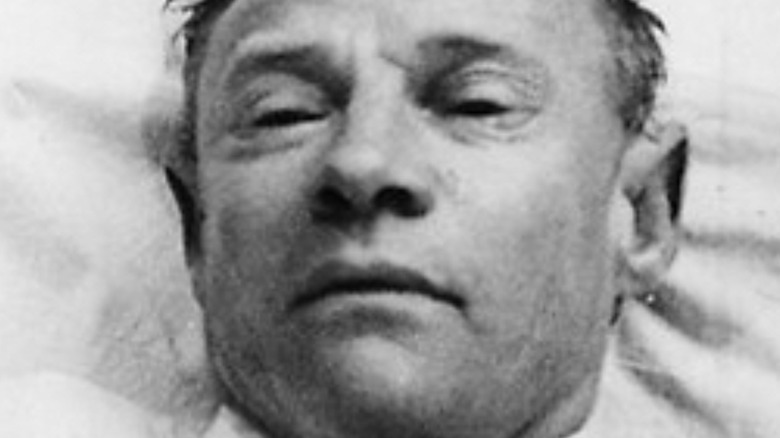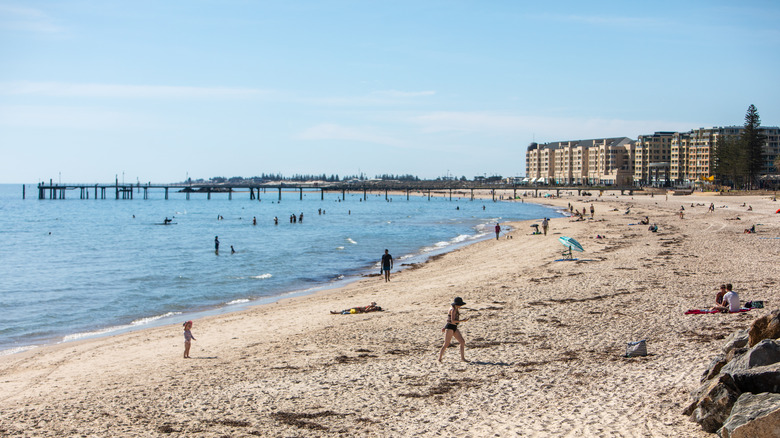The Decades-Old Mystery Of The Unidentified Somerton Man May Have Finally Been Solved
One of the biggest mysteries in modern Australian history may have finally been solved. A researcher focusing on the famous Somerton man case believes that he has identified the man who washed ashore on a beach near Adelaide. Derek Abbott, from the University of Adelaide, believed that the man's true identity is that of Carl "Charles" Webb, an electrical engineer who was born in 1905, which would have made him 43 when he washed up on Somerton beach, per the Australian Broadcasting Corporation.
According to CNN, Abbott teamed up with American genealogist Colleen Fitzpatrick to use DNA sequences to come up with an identity for the Somerton man. However, South Australia Police and Forensic Science South Australia have not verified these findings. Abbott previously contacted the police about exhuming the body for testing, but when that was denied, he managed to find small strands of the man's hair that were trapped in a police-made plaster "death" mask that dated back to the late 1940s, when the body was found.
The story of the Somerton man
On November 30, 1948, several people spotted a well-dressed man laying on Somerton Beach. Some of them reported seeing the man move but believed these motions were that of a drunken man trying to smoke a cigarette. Eventually, others got close enough to notice mosquitos crawling on the man's face but again assumed that he was just passed out and didn't notice them. According to Smithsonian, it wasn't until the next day that people finally realized that the man was truly dead.
Once the man was taken to the hospital and examined, it was found that there were no marks to indicate that he was the victim of violence. However, his cause of death was found to be heart failure, brought about by suspected poisoning. There was nothing to identify the man, and his pockets only contained chewing gum, a pair of combs, a pack of cigarettes, and a ticket to the beach. Some articles of clothing were marked with the name "Kean" or T. "Keane."
John Cleland, a pathology professor from the University of Adelaide, examined the body and discovered a small pocket that had been sewn into the man's pants. Inside of it was a small, rolled-up scrap of paper that read "Tamám Shud." It's a Persian phrase that means "it is ended." It was determined that the scrap had been torn from a rare edition of the book "The Rubaiyat of Omar Khayyam."
Who was the Somerton man?
The case has perplexed investigators for decades, but while there hasn't been a solid answer until now, that hasn't stopped people from floating theories. One of the most common was that the Somerton man was a Soviet spy, while others like Derek Abbott have been skeptical of this explanation, per the Australian Broadcasting Corporation.
Abbot and Colleen Fitzpatrick's work involved getting DNA information from the death mask hair and then creating an expansive family tree comprised of over 4,000 names. This finally led them to the name Carl "Charles" Webb. Abbott was reportedly born on November 16, 1905, in Footscray, which is a suburb of Melbourne. According to CNN, there are no photos of Webb to compare to photos of the Somerton man; however, there is anecdotal evidence to support the idea.
Webb was known to have married a woman named Dorothy Robertson. Fitzpatrick said that the last record they had of Webb was when he left his wife. "He disappeared and she appeared in court, saying that he had disappeared and she wanted to divorce," she told CNN. Additionally, Webb had a brother-in-law named Thomas Kean, which could mean that some of the clothes he was wearing were hand-me-downs from Kean (via Australian Broadcasting Corporation).


